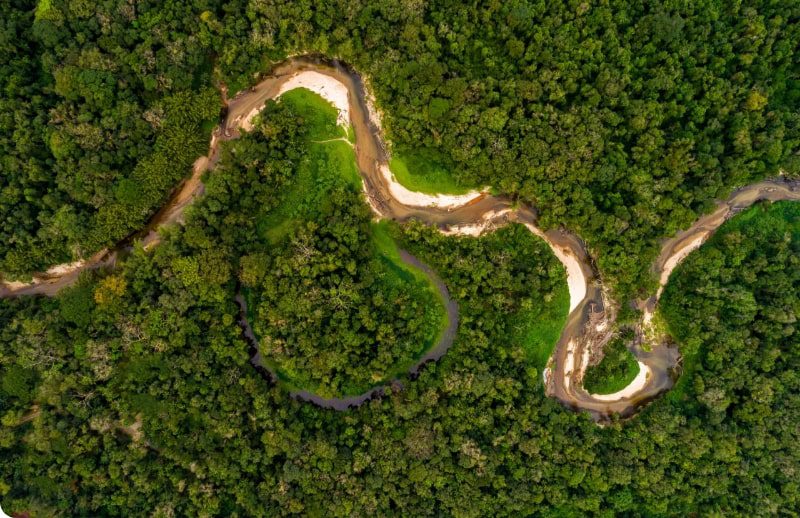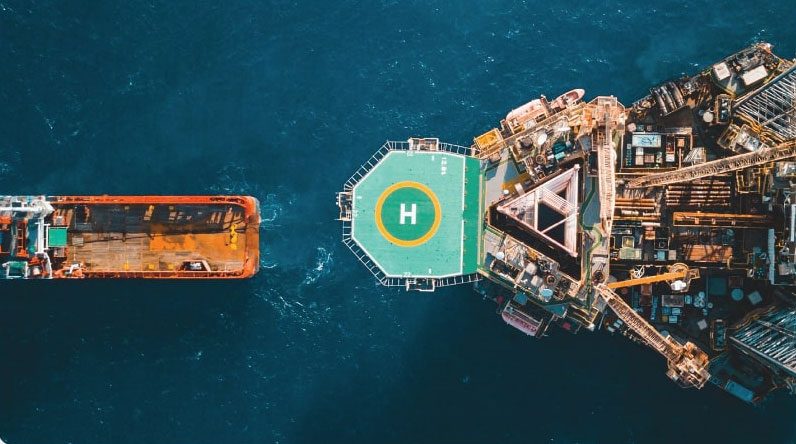Materials & Process Bundle
Cathodic Protection Design (DNV-RP-B401 1983)
The Cathodic Protection Design (ANOD) module is used to design a bracelet anode system by helping the engineer to select an appropriate anode size and spacing along the pipeline. Alternatively, the module may be used to quickly check the validity of an existing or proposed design.
The ANOD module calculation method, default values and help screen information, are based primarily on Det Norske Veritas’ recommended practice for cathodic protection design (DNV RP B401, 1993).
Submarine pipelines are protected from external corrosion by a combination of coatings and cathodic protection (CP). The CP system generally consists of sacrificial anode bracelets attached to the pipeline at regular intervals.
The help menus also give additional advice to the engineer on the recommendations from other codes/standards, technical literature, and Penspen in-house data.
For a given set of design criteria, there are generally many feasible designs which satisfy the code requirements. The ANOD module provides graphical outputs to help the engineer to see quickly the benefits of one design over another and hence to optimise the design by choosing a solution which minimises the total mass of anode material. A further design optimisation feature is the option to calculate an effective utilisation factor, which in certain cases can result in significant savings by increasing the required spacing or reducing the required anode dimensions.
Single Phase Gas Flow
The Gas Flow (GASF) module predicts the pressure and temperature profiles and the flow rate of a single phase gas along a pipeline under steady flow conditions.
The pressure and temperature drop along the pipeline is solved using a numerical integration procedure. The integration is a function of the fluid properties which are in turn a function of the line temperature and pressure. Thus the integration is an iterative procedure, continuing until a balance between fluid property, pressure and temperature drop has been established.
The pipeline is defined as a series of segments. Each segment has its own orientation, geometry, roughness and thermal properties independently defined. The integration procedure divides each segment into elements and integrates down the line from the known starting conditions at the inlet. At each node the properties of gas density and gas viscosity are calculated as these are dependent on the pressure and temperature conditions.
The GASF module provides full tabulated and graphical output of the pressure, temperature and gas velocity profiles and elevation along the pipeline.
The accuracy of the profiles is dependent on the number of segments defined by the user. The more segments defined, the higher the resolution of the profile.
Heat Transfer Calculation
The Heat Transfer (HEAT) module calculates the overall heat transfer coefficient based on the internal diameter of either a fully exposed or fully buried pipe section or the coating thickness required to achieve a specified overall heat transfer coefficient.
To operate the HEAT module, the user defines the pipe dimensions, properties and environmental data.
Below is a summary of the HEAT module operations:
- Calculate an overall heat transfer based on the internal area of a pipe if all the coatings have a specified thickness;
- Calculate the required thickness of a coating to produce a given heat transfer coefficient.
The overall heat transfer coefficient is based on the pipe wall thickness and thermal conductivity. No account is made of the internal boundary layer between pipe wall and the transported fluid.
All exterior coatings are included in the calculation by specifying thickness and thermal property of each coating. For the unburied line, account is taken of either free or forced convection, and the temperature is assumed to be uniform about the external circumference.
The thermal resistance of the surrounding soil is only effective for the fully buried pipeline. Again the temperature is assumed to be constant around the buried pipe circumference.
Hydrate Formation Prediction
The Hydrate Formation (HYDR) module determines hydrate formation temperatures in natural gas lines using the molar percentages and tabulated data of vapour-solid equilibrium constants for the seven hydrate forming hydrocarbons.
Hydrocarbons are known to produce hydrate deposits, in natural gas lines, below the hydrate formation temperature. Since 1969, gas engineers have been using published hydrocarbon equilibrium constant data to calculate the temperature at which these hydrates begin to form. In conjunction with the equilibrium constant data, the composition and working pressure of the gas is required to calculate this unique temperature.
The water dew point temperature, in a gas line, may also be calculated using a standard gas equation. This equation uses the pressure, temperature and water content of the gas.
The amount of water condensate that forms in gas lines, at the dew point pressure and temperature, can also be calculated by manipulating the standard gas equation.
The HYDR module calculates the following three pipeline conditions:
- Hydrate formation temperatures for a defined pressure range;
- Water dew point formation temperatures for a defined pressure range;
- Water content for a given dew point temperature and pressure.
Single Phase Oil & Liquid Flow
The Oil & Liquid Flow (LIQF) module predicts the pressure and temperature profiles along a pipeline under steady flow conditions. This includes the calculation of the inlet or outlet conditions, or the flow rate.
The pressure and temperature drop along the pipeline is solved using a numerical integration procedure. The integration is a function of the fluid properties which are in turn a function of the line temperature and pressure. Thus, the integration is an iterative procedure, continuing until a balance between fluid property, pressure, and temperature drop has been established.
The pipeline is defined as a series of segments. Each segment having its own orientation, geometry, roughness and thermal properties independently defined. The integration procedure divides each segment into elements and integrates down the line from the known starting conditions at the inlet. At each node, the liquid viscosity and consequently the Reynolds number are calculated as these are dependent on the pressure and temperature conditions.
The LIQF module provides full tabulated and graphical outputs of the pressure and temperature profiles and elevation along the pipeline.
The accuracy of the profiles is dependent on the number of segments defined by the user. The more segments defined, the higher the resolution of the profile.
Material Selection & Corrosion Allowance
The Material Selection & Corrosion Allowance (MATS) module provides an aid to linepipe material selection, given a set of pipeline operating conditions and fluid compositional data. The decision is based on an internal corrosion estimation. The object is to design to mitigate the effects of corrosion by selection of either a corrosion allowance, the injection of inhibitors or the use of high alloy steels.
The corrosion module first estimates a corrosion rate for carbon steel from the data provided. It then uses this information to recommend a suitable linepipe material to enable the design life specification to be achieved. Criteria used in assessing the corrosive environment include:-
- Oil/gas /water ratio;
- Quantities of CO2, H2S and O2 present;
- Pressure and temperature;
- Salinity;
- Acidity;
- Flow velocity;
- Bacteria;
- Dissolved solids;
- Undissolved solids.
As well as providing a linepipe material recommendation the module provides a list of warnings and prompts which indicate other factors which may affect corrosion, together with a method of preventing these factors from reducing the life of the pipeline.



